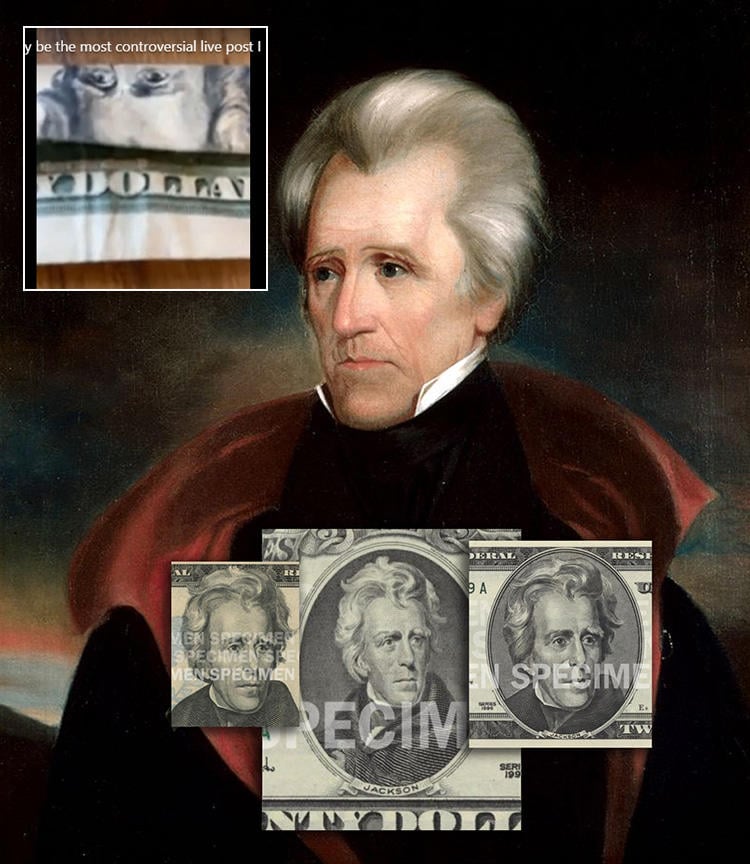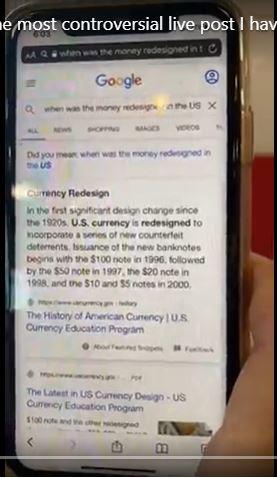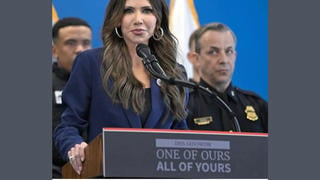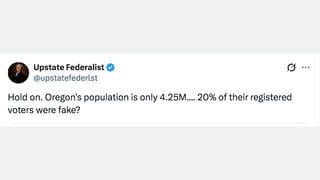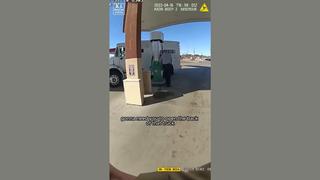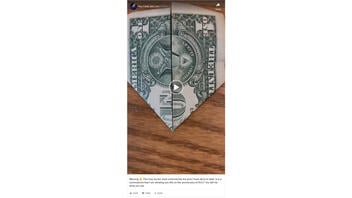
Are there images hidden in redesigns of US currency that depict a progressive scene of the attack on the World Trade Center and the collapse of the twin towers on September 11, 2001? No, that's not true: A video purporting to demonstrate that claim uses bills that -- except for the $1 and $100 bill -- were all redesigned and printed after 2001. That alone discredits the presentation and the claim. And that's without even discussing the practical matters of pareidolia -- or seeing images in unrelated shapes, such as seeing faces in cloud formations -- the symmetry of printed currency, and the unfathomably cruel theory of conspiracy leveled at the designers and engravers working at the US Treasury's Bureau of Engraving and Printing.
The claim was purportedly demonstrated in a video on Facebook (archived here) published by Roy Fields on September 11, 2020. It was captioned:
WarningThis may be the most controversial live post I have done to date. Is it a coincidence that I am showing you this on the anniversary of 9/11? You tell me what you see.
This is what the post looked like on Facebook at the time of writing:
 (Source: Facebook screenshot taken on Tue Sep 22 16:21:10 2020 UTC)
(Source: Facebook screenshot taken on Tue Sep 22 16:21:10 2020 UTC)
The video opens with a warning that the information may be unnerving and unsettling, and then offers a disclaimer about missing, respecting and honoring the lives that were lost in the 9/11 attacks. Moving on, a money-folding parlor trick is introduced that never explicitly spells out what is being proposed about the money design and the 9/11 attacks. Later on, the 12-minute video morphs into a Christian evangelic message. Roy Fields, the narrator and demonstrator, explains that someone sent this currency mystery to him and it captured his interest. Later in the video he says:
I'm not blaming the Government.
I'm blaming the evil people at the top."
The set-up to the demonstration introduces the time in the late 1990s when all of the U.S. currency was redesigned. To prove this assertion that the US currency was all redesigned before the attacks on 9/11/2001, what occurs is a misdirection. A Google search for "When was the money redesigned in the US" is performed. (about 02:00 minutes into the video). The selected caption from the history portion of the website www.uscurrency.gov is read:
In the first significant design change since the 1920s, U.S. currency is redesigned to incorporate a series of new counterfeit deterrents. Issuance of the new banknotes begins with the $100 note in 1996, followed by the $50 note in 1997, the $20 note in 1998, and the $10 and $5 notes in 2000.
The website's history section has several entries beyond what shows in the Google search caption. These describe denomination redesigns that were issued in the 2000s. The Federal Reserve Currency Website was launched in 2015. It is at this website where images of the various denominations, front and back, their design changes and security features over the years can be found. This is the reference where the specific bills used in this money-folding demonstration can be dated and disproven.
With the Google search, the audience is led to believe that what they are about to see was worked into the redesign of the U.S. currency before the attacks of 9/11/2001. How this could have happened is not specified but there are clear implications. Did the designers and engravers have the ability to see into the future? Or did they have inside knowledge about something that was going to happen -- and, rather than raising the alarm and saving thousands of lives, chose instead to code their knowledge of the impending disaster into bizarre origami pictographs hidden in the United States currency?
After the demonstration Fields summarizes:
I just showed you at the beginning of the video, on Google, that they redesigned the money in 1996 they started with the $100 bill and then they moved on to the $50, and then the $20, and then the $10, and it goes 1996, 1997, 1998, and then in 2000 they were done with the redesign.
Folks this is undisputable!
They executed a plan that was already planned.
Here is the one to the five
The towers are hit
The buildings are falling
The buildings are gone
and all there is left is smokeThis is not a joke."
This video does not mention that the folded bills in the demonstration (except for the $1 and $100 note) are all redesigns that happened after 2001. At the denominations page on the U.S. Currency Education Program website, it is possible to view the design changes over time. One feature that did not appear on U.S. currency until 2003, when the $20 note was redesigned, are the very tiny scattered yellow numbers on the back of the bill. Any bill with that feature was printed after 2003. Below are screenshots from the video with the year of each bill's design noted. The $5, $10, $20, and $50 note in the video all have the scattered yellow numbers on the back, meaning they were printed well after 2001.
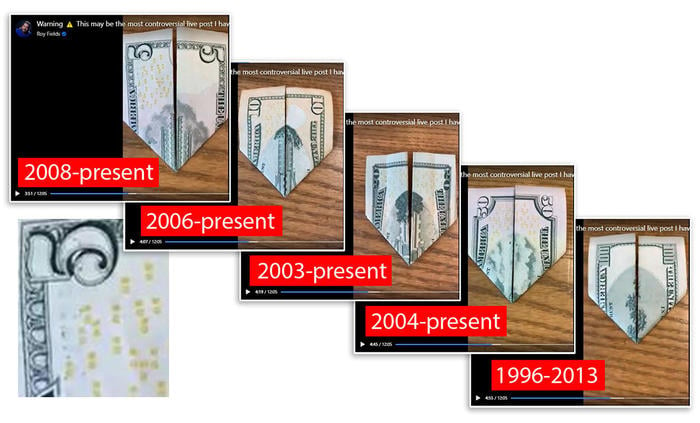 The last parting shot is to use Andrew Jackson's forehead to foretell the COVID-19 pandemic. The trick is to fold a $20 just so, to hide all the lower features of his face, and Andrew Jackson's forehead apparently takes on the look of a person wearing a mask. It is described like this:
The last parting shot is to use Andrew Jackson's forehead to foretell the COVID-19 pandemic. The trick is to fold a $20 just so, to hide all the lower features of his face, and Andrew Jackson's forehead apparently takes on the look of a person wearing a mask. It is described like this:
I'm going to cut off his head a little bit here... Do you see a guy wearing a mask? Is there a guy wearing a mask? Is that Andrew Jackson upside-down but they made his head bigger because they want him to wear a mask? And what year do they want him to wear a mask- oh look at that! 20... 20."
The reference to the year 2020 is from the numerals 20 and 20 printed at each corner of ... a $20 bill.
Below is the 1835 presidential portrait of Andrew Jackson by Ralph Eleaser Whiteside Earl. It is clear that Jackson's prominent forehead was a personal characteristic featured by portrait artists. At the bottom of the image are the three presentations of the engraving of Andrew Jackson as it appeared on the U.S. currency in 2003, 1990 and 1998. Although aspects of the engraving's highlights and shadows are reworked to suit the background, the portrait itself has not had the scale of the forehead modified to make it appear more like a mask when the bill is turned upside down and folded just so.